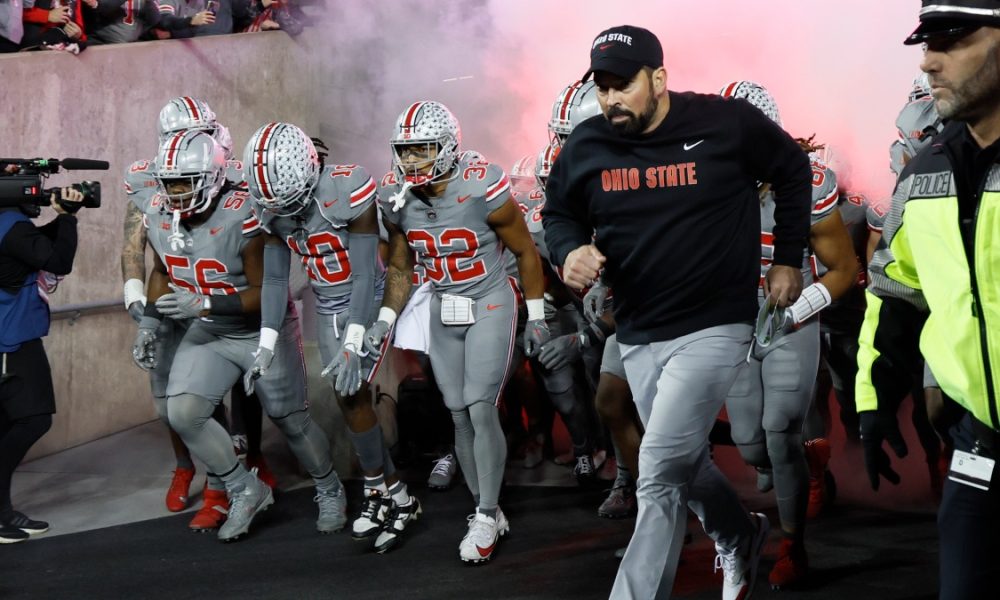NIL
NCAA House Settlement: A Look At The House Settlement & NCAA Implications
The House vs. NCAA settlement has been central to conversations around college football this offseason. If approved, it could drastically change the sport as we know it. The settlement covers many facets of college athletics. It certainly impacts the FBS, both the Power Four and the Group of Five, as well as the FCS and […]

The House vs. NCAA settlement has been central to conversations around college football this offseason. If approved, it could drastically change the sport as we know it.
The settlement covers many facets of college athletics. It certainly impacts the FBS, both the Power Four and the Group of Five, as well as the FCS and other divisions of football and other sports. But details still need to be finalized, and that’s assuming the entire deal doesn’t fall apart or is delayed beyond the upcoming school year.
Here’s more about the House v. NCAA Settlement.


House vs. NCAA Settlement Details
House v. NCAA is a legal case that revolves around the payment of college athletes. Once approved, this would allow schools to pay athletes directly for the first time.
While this does bring even more change to an already chaotic aspect to college sports, some hope that this brings about more stability in the long-term. This, some believe, will allow the NCAA or other governing bodies to enforce more regulations regarding how athletes are paid.
Many schools have already opted into the House settlement, meaning they are on board with how the case shakes out and will eventually pay college athletes directly.
But some have opted out, meaning they won’t pay athletes themselves. While that will save the schools money, it will likely impact their recruiting efforts and therefore their performance during competitions.
NIL House Settlement Back Pay
The House settlement would result in the NCAA and Division I schools paying $2.78 billion in back pay for students who competed in sports between 2016-24.
The House v. NCAA case materialized after collegiate basketball player Sedona Prince and swimmer Grant House, among other college athletes, filed a lawsuit five years ago saying that the NCAA and the power conferences unified against paying athletes and prevented them from profiting off their names, images, and likenesses (NIL).
Do Schools Opting Out Of The House Settlement Have To Provide Back Pay?
All Division I schools will have to contribute money toward back damages as a result of the House settlement, regardless if they opt into it. However, most or all of that for some schools could be taken out of the money normally disbursed from NCAA events like the NCAA Tournaments in men’s and women’s basketball.
Where House Settlement Money Will Come From
As for the $2.78 billion in back damages, the NCAA is to pay 60% of it while 40% of it will come from schools themselves. That’s to be paid out over 10 years. A good portion of the schools’ payments will come out of money that usually goes to them for NCAA competitions.
Schools can also pay students for NIL rights at a maximum of 22% of annual revenue that comes from broadcast deals and tickets.
How that back pay is dolled out hasn’t been widely publicized, though a vast majority is expected to go to football and basketball players. Specifics are to be hammered out by the plaintiffs in the case.
House v. NCAA Settlement NIL Cap
Several sources estimate a cap for how much schools will pay athletes directly will be established and that number would be $20.5 million per institution. That number would go up about 4% per year.
That wouldn’t be a minimum in this instance, just a maximum.
NCAA vs. House Settlement Update
Many expected the House settlement to have gone into effect by now, but that hasn’t happened yet.
It seemed federal judge Claudia Wilken, who oversaw other cases related to college athletics like O’Bannon v. NCAA, was going to approve the settlement. But after hearing from walk-on athletes who would’ve lost their roster spots, the case hit a roadblock.
The House settlement was going to change scholarship limits to roster limits, meaning many athletes on teams who aren’t on scholarships – also called walk-ons – would no longer be capable of participating on their teams.
Wilken reportedly wants to change these roster limit rules, accounting for current walk-ons and grandfathering them in. At the moment, schools seem unwilling to budge much on this as many had already accounted for the changes they believed were imminent.